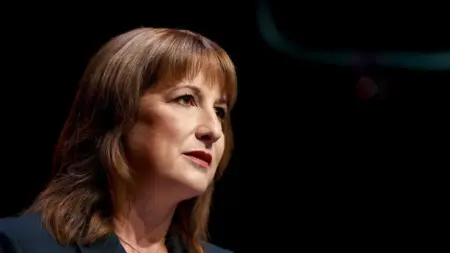Rolling, live coverage as energy price support pushes 2022 deficit £50bn above pre-coronavirus levels
Jeremy Hunt has a lot of important public finances decisions ahead, says the Institute of Chartered Accounts (ICAEW). Not least: what is going to happen to support for businesses beyond April?
Alison Ring, public sector and taxation director for ICAEW, also raised concern about lower investment in the year so far compared with 2021. The ONS said net investment in the first 11 months of 2022 was £34.4bn, £1bn less than the year before.
Chancellor Jeremy Hunt will be relieved that the deficit for the year-to-date only exceeded £100bn by £5bn, on track to stay within the Office for Budget Responsibility’s latest forecast of £177bn for the full year.
The continued slow-down in public capital investment is concerning given its importance to economic growth prospects and future tax revenues, compounded by continued disruption from industrial action.
Public borrowing was boosted in November by the government’s energy and cost of living interventions, the decision to reverse April’s national insurance hike, and high inflation.
The energy bills support scheme cost the government £1.9bn in November, while the energy price guarantee was the main driver of a £4.7bn year-over-year rise in subsidies. In addition, social assistance payments were £3.3bn higher than a year ago, reflecting the payment of the second cost of living grants to working-age benefit recipients.
Looking ahead, continued energy bills support and the ninth consecutive rise in interest rates announced by the Bank of England last week will continue to squeeze public finances. The Office for Budget Responsibility (OBR) has revised its borrowing forecasts up by £64.2bn in financial year 2022-23 and £39.8bn in 2023-24 from their view at Q1 2022.
In the medium-term though, with a recovering economy and rising taxes, the OBR expects net government debt as a proportion of GDP to continue to remain close to 100% of GDP until 2025-26 before starting to fall.
Rolling, live coverage as energy price support pushes 2022 deficit £50bn above pre-coronavirus levelsJeremy Hunt has a lot of important public finances decisions ahead, says the Institute of Chartered Accounts (ICAEW). Not least: what is going to happen to support for businesses beyond April?Alison Ring, public sector and taxation director for ICAEW, also raised concern about lower investment in the year so far compared with 2021. The ONS said net investment in the first 11 months of 2022 was £34.4bn, £1bn less than the year before.Chancellor Jeremy Hunt will be relieved that the deficit for the year-to-date only exceeded £100bn by £5bn, on track to stay within the Office for Budget Responsibility’s latest forecast of £177bn for the full year.The continued slow-down in public capital investment is concerning given its importance to economic growth prospects and future tax revenues, compounded by continued disruption from industrial action.Public borrowing was boosted in November by the government’s energy and cost of living interventions, the decision to reverse April’s national insurance hike, and high inflation.The energy bills support scheme cost the government £1.9bn in November, while the energy price guarantee was the main driver of a £4.7bn year-over-year rise in subsidies. In addition, social assistance payments were £3.3bn higher than a year ago, reflecting the payment of the second cost of living grants to working-age benefit recipients.Looking ahead, continued energy bills support and the ninth consecutive rise in interest rates announced by the Bank of England last week will continue to squeeze public finances. The Office for Budget Responsibility (OBR) has revised its borrowing forecasts up by £64.2bn in financial year 2022-23 and £39.8bn in 2023-24 from their view at Q1 2022.In the medium-term though, with a recovering economy and rising taxes, the OBR expects net government debt as a proportion of GDP to continue to remain close to 100% of GDP until 2025-26 before starting to fall. Continue reading…





